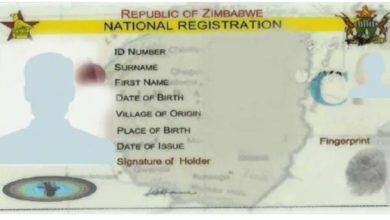Is COVID-19 now classified as airborne?
The #coronavirus is mainly transmitted through droplets generated when an infected person coughs, sneezes or speaks.
FACT. #COVID19 is NOT airborne.
FACT: #COVID19 is NOT airborne.
The #coronavirus is mainly transmitted through droplets generated when an infected person coughs, sneezes or speaks.
To protect yourself:
-keep 1m distance from others
-disinfect surfaces frequently
-wash/rub your 👐
-avoid touching your 👀👃👄 pic.twitter.com/fpkcpHAJx7— World Health Organization (WHO) (@WHO) March 28, 2020
The facts are that COVID-19 has not been classified as airborne and that the WHO has not issued precautions to that effect. According to the organisation, most preliminary studies have suggested little evidence to prove that the virus is airborne, as such many reports about this ‘’airborne precaution’’ are inflammatory.
However new facts are still being established about the virus, the WHO has advises the public to be on the lookout for updated information about the virus and its transmission
Advice from the World Health Organisation (WHO), has so far pointed out that COVID-19 can be contracted through multiple means including droplets of sneeze, physical contact with infected persons and touching surfaces that have been previously exposed to the virus. Most noticeably it excludes airborne transmission.However recent reports from publications including CNBC point that WHO is considering issuing an ‘airborne precaution’ for the virus.
What a COVID-19 airborne transmission means?According to health experts, when a virus is airborne, it is aerosol, meaning that if it is sprayed into the air through for example a sneeze, it can remain suspended through tiny droplets in the air for hours. A person therefore could contract the virus just by breathing in that air, this could be several hours after the sneeze.Effectively this would mean a speedily spread of the virus to large populations and more precautions would need to be taken by the public. Are the reports factual?
What are the facts?
1. COVID-19 is not airborne in the natural atmosphere.While some experts from the WHO say some studies have shown that the virus could be airborne in a given environmental setting largely dependent on its heat and humidity, no evidence suggests that the COVID-19 virus can remain suspended in atmosphere. Speaking at a virtual press conference, Maria Van Kerkhove, the head of WHO emerging diseases unit, allayed fears of the virus being airborne by explaining where and when the virus can become airborne. She said that “when you do an aerosol-generating procedure like in a medical facility you have a possibility to aerosolize or have these particles stay longer in the air”. Essentially it is only a possibility for the virus to airborne and that can only be in constricted environments with certain levels of heat and humidity. Such a scenario is not readily created in the atmosphere.
2. The World Health Organisation has NOT issued an ‘airborne precaution’according to Kherkhove, health experts across the world are already aware of studies to do with the transmission of COVID-19 and follow strict guidelines to avoid transmission, as such, the WHO has not officially issued an airborne precaution but is only considering it. She added that, “It’s very important that healthcare workers take additional precautions when working on patients or doing any of these procedures” Such revelations are timely to the Zimbabwean medical community, where professionals recently lamented the safety standards in the public hospitals and threatened to down tools. This planned airborne precautionary measure by WHO will be targeted and applicable to medical personnel therefore the public should not panic






